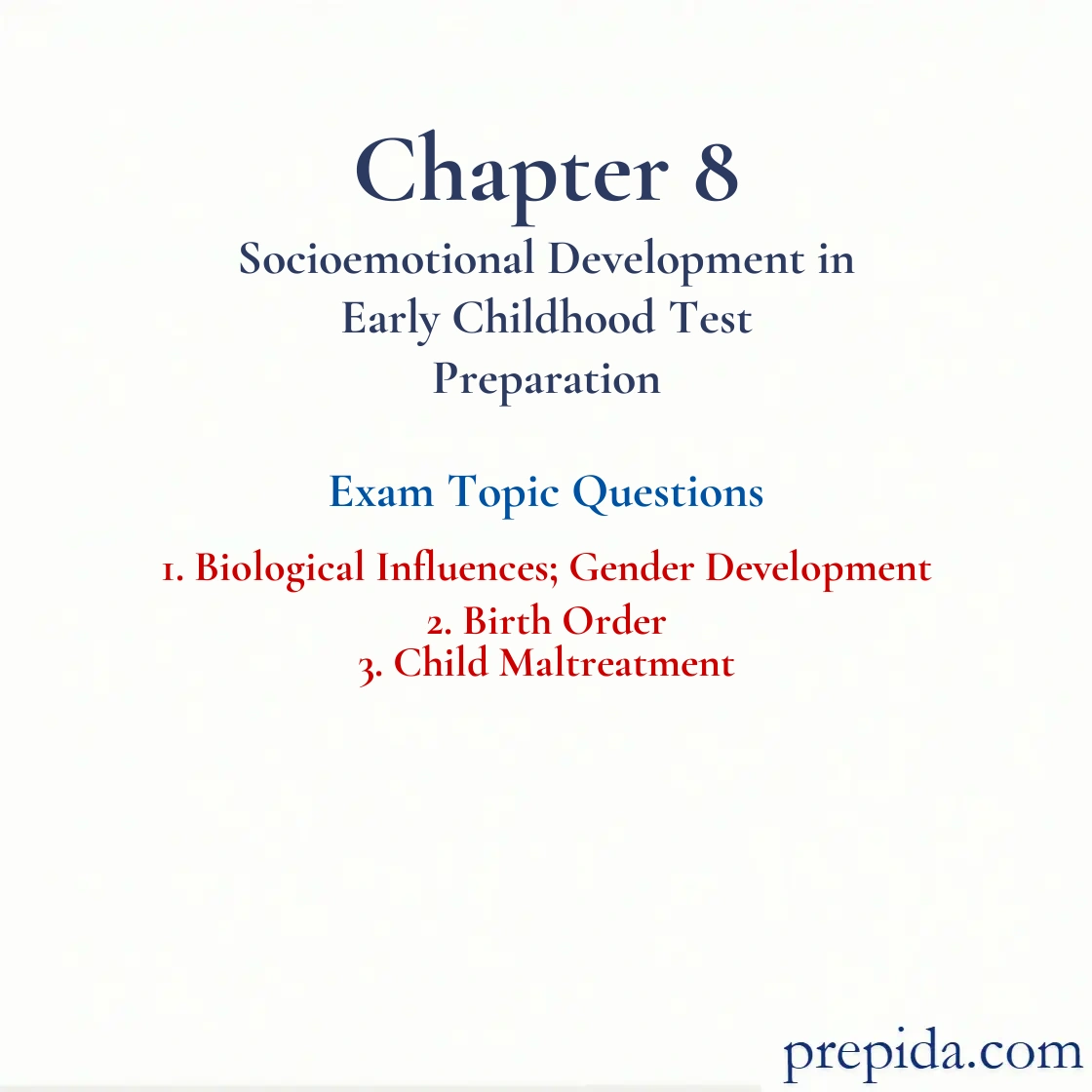
________ promote the development of female physical sex characteristics.
- Androgens
- Estrogens
- Endorphins
- Opioids
Neurogenesis: The generation of new neurons.
________ promote(s) the development of male physical sex characteristics.
- Androgens
- Estrogens
- Progesterone
- Estradiol
Androgyny: The presence of positive masculine and feminine characteristics in the same person.
Which of the following hormones is an androgen?
- testosterone
- progesterone
- estradiol
- insulin
Hormones: Powerful chemical substances secreted by the endocrine glands and carried through the body by the bloodstream.
Which of the following hormones is an estrogen?
- testosterone
- androstenedione
- insulin
- estradiol
Centration: Focusing attention on one characteristic to the exclusion of all others.
________ psychologists propose that men have gradually changed over time to have dispositions that favor competition and risk taking.
- Psychoanalytic
- Evolutionary
- Behavioral
- Social learning
Evolutionary Psychology: Emphasizes the importance of adaptation, reproduction, and “survival of the fittest” in shaping behavior.
According to evolutionary psychologists, natural selection favored females who chose
- multiple partners to have many children.
- a mate who would stay home and help raise the children than provide resources.
- ambitious mates who could provide their children with resources and protection.
- short-term mating strategies.
Affordances: Opportunities for interaction offered by objects that fit within our capabilities to perform functional activities.
Psychological evolutionary theories of gender differences fail to take into account
- cultural and individual variations in gender differences.
- intelligent speculations about the roles of men and women in prehistoric times.
- the differing roles in reproduction for both males and females.
- the fact that people are locked into behavior that was adaptive in the evolutionary past.
Gender: The characteristics of people as males or females.
Low levels of ________ in the female embryo allow the normal development of female sex organs.
- estradiol
- progesterone
- estrogens
- androgens
Androgyny: The presence of positive masculine and feminine characteristics in the same person.
The two main classes of sex hormones, estrogens and androgens, are secreted by the
- hypothalamus.
- gonads.
- pineal gland.
- pituitary gland.
Hormones: Powerful chemical substances secreted by the endocrine glands and carried through the body by the bloodstream.
Why do more researchers think that birth-order influences on child development have been emphasized too strongly?
- There are no clear patterns of birth-order influences on personality.
- With continued study on birth-order influences, the findings are bound to create self-fulfilling prophecies that will perpetuate birth order.
- The patterns of birth-order influences that scientists describe are largely speculation and are not based on evidence.
- Birth order by itself shows limited ability to predict behavior when all the factors that influence behavior are considered.
Behavior Genetics: The field that seeks to discover the influence of heredity and environment on individual differences in human traits and development.
In the context of birth order, research indicates that firstborn children are ________ than later-born children.
- more rebellious
- less self-controlled
- less helpful
- more adult-oriented
Nine-year-old Tadako's uncle has been taking pictures of her naked body and selling them on the Internet. This constitutes
- verbal abuse.
- sexual abuse.
- child neglect.
- physical abuse.
Damian's parents fail to provide for his basic needs; he is often unfed and dirty when he gets to school. This constitutes
- physical abuse.
- mental injury.
- child neglect.
- child inattention.
Neglected Children: Children who are infrequently nominated as a best friend but are not disliked by their peers.
Punching, beating, kicking, biting, burning, and shaking a child constitute
- verbal abuse.
- sexual abuse.
- child neglect.
- physical abuse.
The public and many professionals use the term child abuse to refer to both abuse and neglect; developmentalists increasingly use the term
- child neglect.
- child maltreatment.
- child battery.
- child assault.